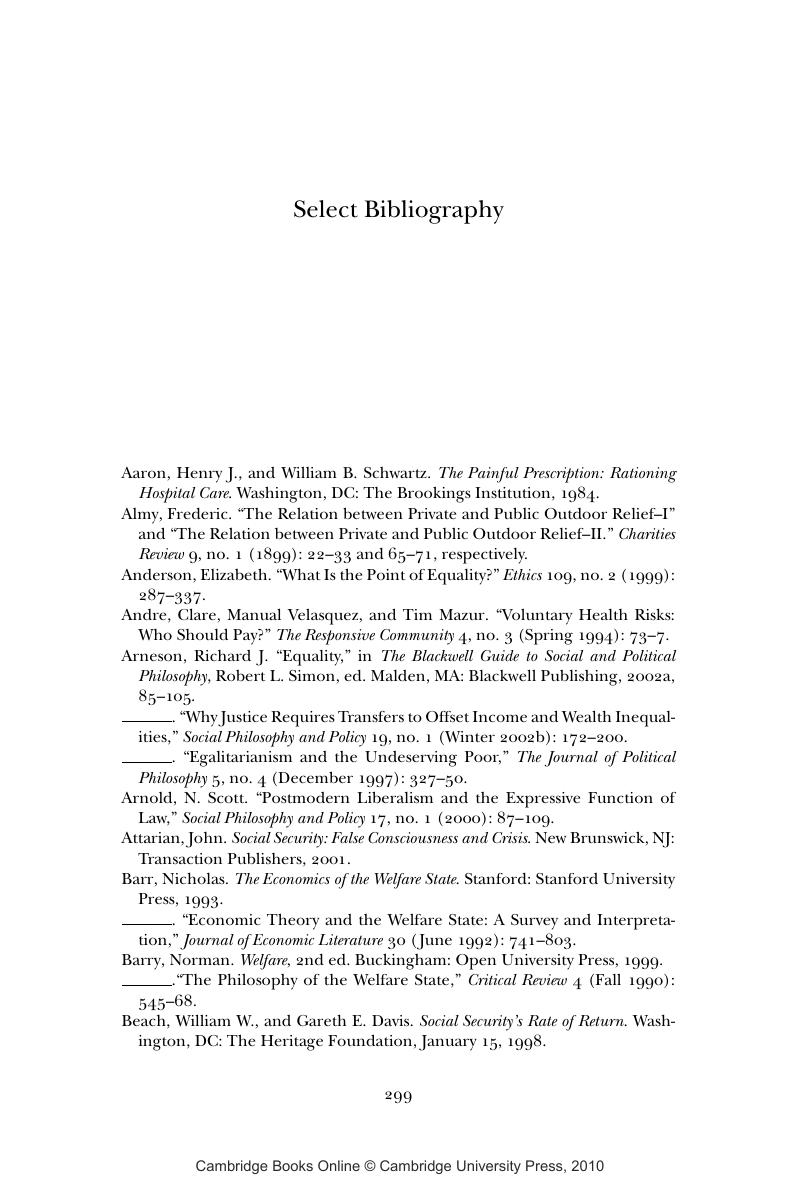Book contents
- Frontmatter
- Contents
- Preface
- 1 Introduction
- 2 Central Perspectives in Political Philosophy
- 3 Health Insurance, Part I
- 4 Health Insurance, Part II
- 5 Old-Age or Retirement Pensions
- 6 Welfare or Means-Tested Benefits, Part I
- 7 Welfare or Means-Tested Benefits, Part II
- 8 Conclusion
- Select Bibliography
- Index
- References
Select Bibliography
Published online by Cambridge University Press: 12 December 2009
- Frontmatter
- Contents
- Preface
- 1 Introduction
- 2 Central Perspectives in Political Philosophy
- 3 Health Insurance, Part I
- 4 Health Insurance, Part II
- 5 Old-Age or Retirement Pensions
- 6 Welfare or Means-Tested Benefits, Part I
- 7 Welfare or Means-Tested Benefits, Part II
- 8 Conclusion
- Select Bibliography
- Index
- References
Summary

- Type
- Chapter
- Information
- Is the Welfare State Justified? , pp. 299 - 310Publisher: Cambridge University PressPrint publication year: 2007
References
- 1
- Cited by



